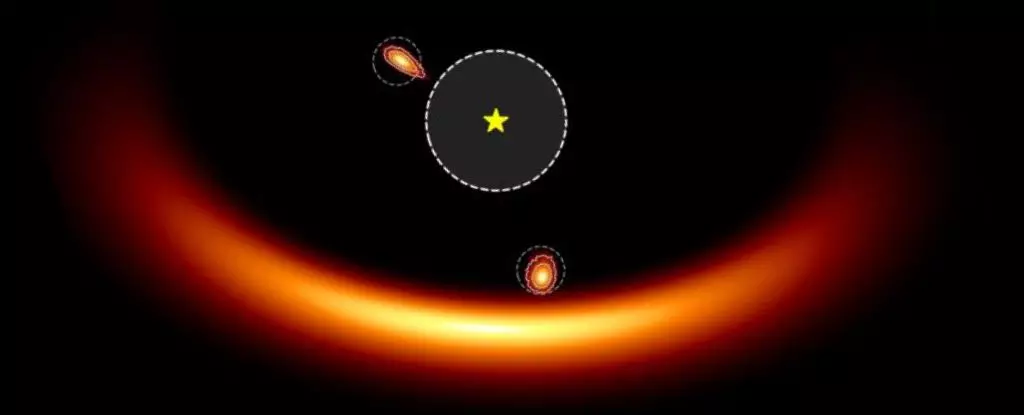Planet formation is one of the universe’s most fascinating phenomena. Young stars, enveloped in swirling disks of gas and dust, provide the perfect cradle for celestial bodies to coalesce and grow. With the advancement of technology, astronomers now have unprecedented methods to observe and study this incredible process. In particular, the James Webb Space Telescope (JWST) has emerged as a key instrument in revealing the mysteries of planet formation, focusing on intriguing systems such as PDS 70, a star located approximately 370 light-years away from Earth.
Introducing PDS 70: A Glimpse into the Cosmic Nursery
PDS 70 is classified as an orange dwarf star that is just a child in terms of stellar life stages, approximately 5.4 million years old. Embedded within its surrounding disk, two planets, PDS 70b and PDS 70c, are in their formative stages—a scenario that is quite rare for astronomers to directly observe. Both of these exoplanets were first imaged by the Very Large Telescope (VLT) in 2018 using the SPHERE instrument, marking a major milestone in observational astronomy. PDS 70b is notably recognized as the first protoplanet ever captured in direct imaging.
The fact that PDS 70 is still in its early stages and actively accreting material allows researchers to witness planetary development akin to a solar system in its infancy. This aspect provides a valuable opportunity for astronomers to ask the fundamental yet complex questions regarding how planetary systems like our own evolve over time.
With the launch of the JWST, scientists embarked on a new mission to further investigate the PDS 70 system. A recent study published in The Astronomical Journal showcases the findings from the JWST’s Near Infrared Imager and Slitless Spectrograph (NIRISS), which functions as an interferometer through a specialized technique known as Aperture Masking Interferometry. The innovative design allows the JWST to achieve higher resolution observations by effectively increasing the telescope’s size.
In this state-of-the-art study, lead author Dori Blakely and her team detailed how the JWST detected brighter emissions from PDS 70b and c than had been recorded in prior observations. They focused on examining the spectral data at longer wavelengths, which provided richer insights into the atmospheres and material composition surrounding these protoplanets. The detection of warm material indicates ongoing accretion processes from a circumplanetary disk, suggesting that these celestial bodies are not merely vestiges from a bygone era but are dynamically evolving entities.
Beyond the Known: Speculations on New Planetary Bodies
An intriguing aspect of the JWST’s observations is the potential discovery of a third planet in the PDS 70 system, known as PDS 70d. Initial hints regarding the existence of this third planet arose from earlier studies; however, its actual nature remained uncertain. The recent findings from the JWST provided necessary constraints on this enigmatic object, suggesting that it exhibits different atmospheric properties compared to its siblings, PDS 70b and c. This might signify varying formation conditions or evolutionary paths within the same system.
The deduced differences in atmospheric composition between the known planets and the hypothesized PDS 70d point to an exciting scientific paradigm: that planetary systems may host diverse bodies that formed under varying conditions and timelines. This information could reshape our understanding of planetary formation and material distribution within a solar system context.
The study of PDS 70 not only enhances our knowledge of its particular system but also intersects with broader questions in astrophysics: How do planets form, evolve, and interact within their nascent systems? The observations from the JWST present what can be viewed as a cosmic snapshot—offering a unique view of the origins of planetary bodies as they engage in processes of accretion and growth.
Moreover, the ability of the JWST to capture images and data from this profound distance reinforces the potential of advanced observatory technology. As scientists continue to unravel the intricate threads of planet formation, each new layer of discovery—like those uncovered in the PDS 70 system—adds nuance and depth to our understanding of the universe’s vast and intricate tapestry. Through ongoing research and debate, we embark on an exciting journey of comprehension, trying to piece together the stories of the young stars and planets that populate our cosmos.

